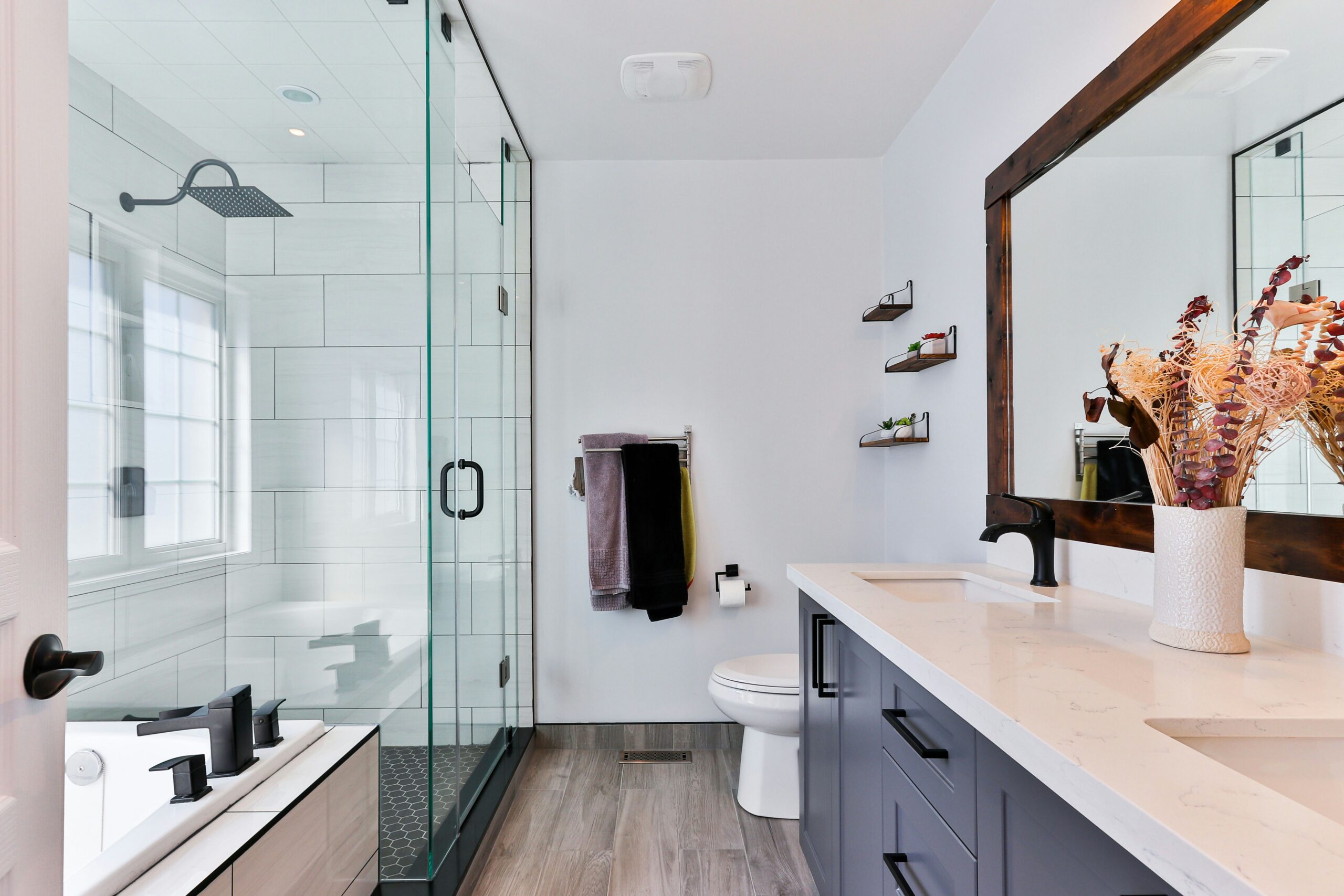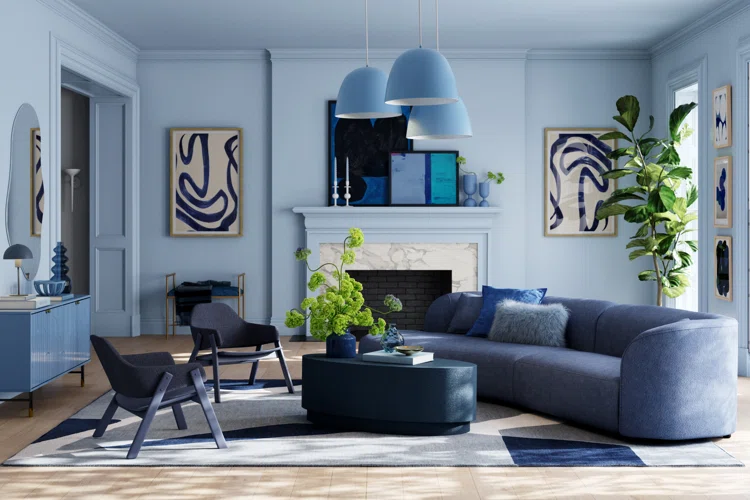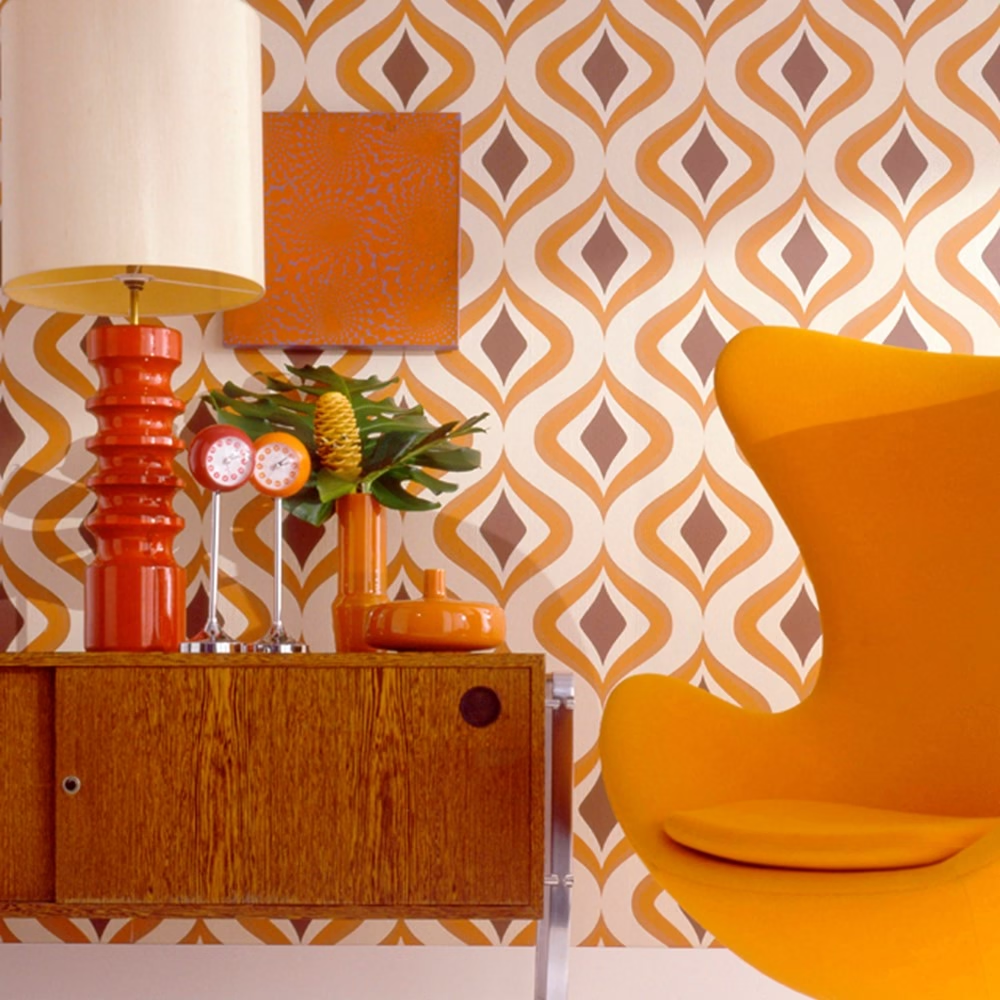
Introduction to 2025 Bathroom Trends
The bathroom is often an overlooked space when it comes to design; however, it is now emerging as a pivotal area for innovation and personalization. As we approach 2025, the significance of bathroom design trends becomes increasingly apparent. These trends reflect a confluence of evolving consumer preferences, technological advancements, and a heightened awareness surrounding sustainability and wellness. These elements not only influence the aesthetics of bathrooms but also the functional aspects, making them more user-friendly and eco-conscious.
Today’s consumers are looking for bathroom spaces that do more than just fulfill their basic needs. They desire spaces that offer comfort, reflect their personal style, and incorporate the latest innovations. The shift towards personalized designs signifies a departure from generic, cookie-cutter bathrooms, and rather, an embrace of unique styles that echo individual lifestyles. In 2025, we can expect to see a rise in multifunctional spaces that cater to diverse needs, be it relaxation, rejuvenation, or a niche design sensibility.
Moreover, the integration of technology is a defining factor in shaping the future of bathroom designs. Smart bathroom features, from automated lighting to advanced water-saving fixtures, are increasingly being incorporated to enhance both utility and luxury. These technologies cater to the desire for convenience and efficiency, providing users with innovative solutions that not only save time but also reduce environmental impact.
Finally, as mental well-being becomes a focal point for many, the emphasis on wellness promotes the incorporation of elements that foster relaxation and comfort. Natural materials, biophilic design, and soothing color palettes are gaining traction as individuals strive to create their personalized sanctuaries. The upcoming design trends for bathrooms in 2025 signify an exciting shift that encompasses individuality, innovation, and sustainability.
Spa-Inspired Designs: A Retreat at Home
The contemporary bathroom is evolving into a personal sanctuary, with spa-inspired designs increasingly favored by homeowners seeking tranquility in their daily routines. These retreats emphasize rest and rejuvenation, highlighting key features that create an atmosphere reminiscent of high-end spa experiences. Central to these designs are freestanding soaking tubs, which not only serve as a functional element but also as a striking visual centerpiece. These tubs invite relaxation and offer an escape after a long day, turning the bathroom into a private oasis.
Moreover, rain showers are gaining popularity, enhancing the sensory experience of a spa-like bathroom. These fixtures simulate the feeling of cascading water from above, providing a soothing and immersive experience. Homeowners are also incorporating body sprays and handheld showerheads to cater to specific needs, creating a customized shower experience that promotes wellness and relaxation.
Color palettes play a crucial role in establishing a serene environment. Calming shades like soft blues, muted greens, and earthy tones are favored for their ability to evoke a sense of peace. These colors often draw inspiration from nature, aligning with the trend towards sustainability and natural materials in bathroom design. Incorporating elements such as wood, stone, and bamboo further enhances this connection to the outdoors, creating a harmonious balance between the built environment and nature.
Lighting is another significant aspect of spa-inspired designs. Soft, ambient lighting, complemented by strategically placed fixtures, contributes to a calming atmosphere. Dimmer switches allow for adjustments based on the time of day or mood, facilitating an environment suitable for relaxation or rejuvenation. By integrating these elements, homeowners transform their bathrooms into tranquil retreats that prioritize wellness and self-care, providing an essential escape in the comfort of their homes.
Smart Fixtures: The Future of Bathrooms
The evolution of bathroom design is increasingly influenced by technological advancements, particularly through the rise of smart fixtures. As we head into 2025, these fixtures are set to transform the way individuals interact with their bathrooms, enhancing convenience and improving energy efficiency. Voice-activated showers, for instance, allow users to control water temperature and flow with simple verbal commands, offering a personalized experience tailored to individual preferences.
Smart mirrors represent another innovation that integrates technology into bathroom routines. Equipped with features such as built-in LED lighting, touchless controls, and even voice recognition, smart mirrors can provide real-time information, including news updates, weather forecasts, and personalized skincare routines. This functionality not only enhances the user experience but also facilitates better hygiene practices by minimizing surface contact.
Automatic faucets are also gaining traction, proving beneficial for both water conservation and ease of use. These fixtures utilize sensors to detect hand movement, providing a hands-free experience that reduces water wastage. By automatically shutting off when no longer in use, they align with the growing demand for sustainable bathroom solutions. Alongside other smart technology integrations, these faucets contribute to a significant decrease in overall water consumption within households.
Ultimately, the incorporation of smart fixtures into bathroom design is reshaping daily routines. By offering personalized settings and improved energy efficiency, these technological advancements promise to provide not only convenience but also a more sustainable approach to water and energy usage. As the design landscape continues to evolve, embracing these innovations will be key for homeowners looking to enhance their bathrooms with the latest in modern technology.
Sustainable Materials: Going Green in Bathroom Design
The increasing awareness of environmental issues has led to a significant shift in consumer preferences towards sustainable materials in bathroom design. This trend reflects a broader commitment to eco-friendliness and sustainability, which is becoming an essential consideration for both homeowners and designers alike. By incorporating materials such as recycled glass, bamboo, and low-VOC paints, designers can create beautiful, functional bathrooms that align with eco-conscious values while also contributing positively to the environment.
Recycled glass, for instance, is not only aesthetically pleasing but also serves as a practical choice for countertops and tiles. This material reduces waste by repurposing discarded glass into functional surfaces that can be used in bathrooms. Furthermore, bamboo is a rapidly renewable resource that offers durability and resilience, making it suitable for flooring and cabinetry. Its fast growth rate and ability to thrive without pesticides highlight its appeal as a sustainable option, making it increasingly popular in modern bathroom designs.
Another important aspect of sustainable bathroom design is the use of low-VOC (Volatile Organic Compounds) paints, which minimize harmful emissions and improve indoor air quality. These paints are available in a variety of colors and finishes, providing options for creating vibrant and inviting spaces without compromising environmental health. According to recent studies, the adoption of low-VOC products can lead to a significant reduction in indoor air pollutants, further enhancing the overall well-being of the occupants.
Statistics show that nearly 70% of consumers are now more likely to choose eco-friendly products, indicating a substantial market shift towards sustainable preferences. Additionally, homes designed with sustainable materials often see an increase in property value, as they appeal to a growing demographic of environmentally conscious buyers. By prioritizing sustainability through the incorporation of eco-friendly materials, homeowners and designers not only contribute to a healthier planet but also meet the expectations of modern consumers.
Bold Colors and Patterns: Making a Statement
As bathroom design evolves, one of the notable trends emerging for 2025 is the incorporation of bold colors and striking patterns. This trend provides an opportunity for homeowners to express their individuality and creativity, moving away from the often subdued, neutral palettes that have dominated bathroom aesthetics in previous years. Deep blues, rich greens, and vibrant hues are becoming increasingly popular, offering a captivating backdrop that can transform the bathroom into a personal sanctuary.
Among the favored color selections, deep cobalt and navy blue evoke a sense of depth and tranquility, while rich forest greens offer a refreshing nod to nature. These colors not only create a visually stunning environment but can also enhance the atmosphere of relaxation commonly sought in bathroom spaces. When used strategically on walls or as accents, these bold shades can contribute to a serene yet invigorating ambiance.
Patterns have similarly found their place within this trend, with vibrant wallpaper designs gaining traction. Floral motifs, geometric shapes, and abstract art patterns are making waves, serving as focal points that add dimension and character to the space. Combining these artistic elements with bold color choices allows homeowners to curate a unique aesthetic that reflects their personal style. Dark, patterned tiles can adorn the floor, while wallpaper or painted walls can create a cohesive look that dazzlingly contrasts with traditional design elements.
The key to successfully incorporating bold colors and patterns lies in balance. While a vivid color palette and attention-grabbing designs can elevate the visual appeal, they should complement rather than overwhelm the space. Therefore, utilizing these trends to create impactful focal points can lead to a personalized bathroom that embodies both style and comfort, ensuring it stands out in a sea of conventional designs.
Minimalism and Open Spaces: Embracing Simplicity
In recent years, the trend towards minimalism has gained momentum across various design fields, including bathroom design. This approach emphasizes the beauty of simplicity and the importance of open spaces, providing a serene and uncluttered environment. A minimalist bathroom often features clean lines, streamlined fixtures, and an overall aesthetic that is both calming and functional.
By focusing on essential elements, minimalist design in bathrooms allows for clarity and space optimization. In smaller bathrooms, this design philosophy can be particularly beneficial, as it creates an illusion of greater space. The use of neutral color palettes, such as whites, grays, and light pastels, helps to enhance the feeling of openness and tranquillity. These colors reflect light effectively, contributing to a brighter, more inviting atmosphere.
Furthermore, the incorporation of thoughtful storage solutions plays a critical role in maintaining an uncluttered appearance. Built-in cabinets and subtle shelving can provide adequate storage while remaining out of sight, ensuring that the bathroom remains free of unnecessary items. This not only promotes a clean look but also encourages mental clarity and peace of mind, allowing individuals to escape the chaos often found in more cluttered environments.
Minimalist design also embraces materials like natural wood, stone, and high-quality metals that elevate the overall aesthetic without overwhelming the senses. The focus is on tactile experiences rather than an abundance of visual elements. In essence, creating a minimalist bathroom centered around open spaces fosters an environment that is both functional and restorative, making it an ideal choice for modern homes looking to prioritize serenity and simplicity in their design choices.
Vintage and Retro Influences: A Nostalgic Touch
The trend of integrating vintage and retro influences into bathroom design has become increasingly prominent, as homeowners seek to evoke a sense of nostalgia while embracing modern aesthetics. This revival manifests through various design elements that adorn contemporary bathroom spaces, allowing for a unique blend of the old with the new. Key features such as clawfoot tubs, which have long been admired for their elegant silhouettes and luxurious presence, serve as focal points in many updated interiors. These freestanding bathtubs not only evoke memories of bygone eras but also offer a comfortable bathing experience, making them a quintessential addition in curating a vintage atmosphere.
Another hallmark of this design trend is the use of subway tiles, originally popularized in the early 20th century. Today, these classic tiles are being reimagined in various colors and finishes, extending their appeal beyond mere functionality to become an integral part of the bathroom’s aesthetic. Whether arranged in a traditional white, glossy finish or in contemporary hues, subway tiles can effortlessly complement various retro fixtures, enhancing the nostalgic charm of the space.
Additionally, retro light fixtures play a vital role in establishing the ambiance of a vintage-inspired bathroom. Pendant lights or sconces with antique brass finishes, paired with vintage-style bulbs, can help to recreate a warm and inviting atmosphere reminiscent of earlier times. Incorporating these fixtures not only provides practical lighting solutions but also elevates the overall design by infusing character and interest. Furthermore, the ingenious combination of these vintage elements with modern materials and appliances allows for cohesive bathroom spaces that celebrate nostalgia while accommodating contemporary needs.
Functional Layouts: Maximizing Space and Utility
In contemporary bathroom design, the significance of functional layouts cannot be overstated, particularly when addressing smaller spaces. The primary goal of a functional layout is to enhance usability while maximizing the available square footage. When designed with intention, a bathroom can transform from a cramped, overlooked area into a harmonious space that meets daily needs while exhibiting style.
One effective approach in optimizing space is the incorporation of dual vanities. This layout not only provides additional counter space for toiletries but also promotes efficiency by allowing multiple users to navigate the space simultaneously. By carefully positioning the vanities, homeowners can create an inviting atmosphere that prioritizes convenience without sacrificing aesthetics.
Another pivotal aspect of functional bathroom design is built-in storage. Utilizing vertical space through cabinetry or shelving can significantly reduce clutter. For instance, recessed medicine cabinets or floating shelves can showcase decorative items while maintaining practicality. In a cramped bathroom, even a small nook can be transformed into a functional storage area, thus enhancing the overall user experience.
Additionally, the selection of space-saving fixtures plays a crucial role in a well-planned bathroom layout. Wall-mounted toilets and compact sinks can free up floor space, creating an illusion of openness. Furthermore, innovative designs such as corner showers or bathtubs can utilize often neglected areas, ensuring every inch of the bathroom is both functional and accessible.
In essence, a thoughtfully designed bathroom with functional layouts can profoundly affect usability and comfort. By integrating elements like dual vanities, built-in storage solutions, and innovative fixtures, homeowners can ensure that their bathrooms not only look appealing but also support their everyday routines efficiently.
Personalized Features: Tailoring Spaces to Individual Needs
The trend of personalization in bathroom design is increasingly gaining momentum, as homeowners seek to create spaces that not only meet functional requirements but also reflect their individual styles and habits. As the bathroom evolves from a utilitarian space into a sanctuary for relaxation and rejuvenation, incorporating custom options has become paramount. Adjustable lighting is one of the key features that allow users to tailor their experience. With the ability to change the brightness and color temperature, homeowners can create a soothing atmosphere for unwinding at the end of the day or vibrant lighting for morning routines.
Moreover, ergonomic fixtures are becoming essential in modern bathroom design, prioritizing both comfort and accessibility. From faucets designed to minimize strain on the wrist to fixtures that accommodate specific physical needs, personalized ergonomics enhance user experience. This focus on practicality paired with aesthetics ensures that every individual can find fixtures that not only fit their body but also enhance the overall design of the bathroom.
Storage solutions are another significant aspect of personalized bathroom features. Custom cabinetry and shelving can be designed to fit unique spaces, accommodating specific items such as toiletries, towels, or personal care products. From pull-out drawers that provide easy access to toiletries to built-in nooks for decorative items, tailored storage options help to maintain a clutter-free environment while reflecting personal organization preferences.
The increasing demand for bathrooms that embody an individual’s style and meet specific needs is evident in the rise of personalization trends. Homeowners are no longer content to accept generic designs; instead, they are investing in unique features that cater to their preferences and enhance functionality. This shift not only elevates the design of the space but also enhances the overall bathing experience, making each bathroom a true reflection of its user.
Conclusion: The Future of Bathroom Design in 2025
As we explore the top bathroom design trends for 2025, it becomes clear that the evolution of bathroom aesthetics and functionality is deeply intertwined with modern lifestyle needs. The incorporation of smart technology not only elevates convenience but also enhances efficiency, allowing homeowners to pursue a more streamlined daily routine. This technology is complemented by a strong emphasis on wellness, with features like spa-like atmospheres and the integration of nature, which promote tranquility and self-care within the home environment.
Furthermore, sustainability remains a central theme in the future of bathroom design. The shift towards eco-friendly materials and fixtures is not merely a trend but a profound change that reflects the growing consciousness around environmental conservation. By utilizing water-saving devices and energy-efficient lighting, homeowners can significantly reduce their ecological footprint while enjoying contemporary design elements that do not compromise on style or comfort.
The trends we have discussed illustrate a clear understanding of the importance of multifunctional spaces—positions that serve a dual purpose without sacrificing elegance. Whether it is designing a bathroom that seamlessly transitions between a sanctuary for relaxation and a space for essential daily grooming, the focus remains on maximizing utility without sacrificing visual appeal.
Embracing these trends in your own bathroom renovation can lead to a space that is not only aesthetically pleasing but also responsive to the needs of modern living. By carefully considering the innovations in bathroom design poised to take center stage in 2025, homeowners can create rooms that are not only enjoyable to use but that also add lasting value to their properties. Thus, reflecting on these trends can help anyone preparing for a renovation make informed decisions that align with the future of bathroom design.
![]()



